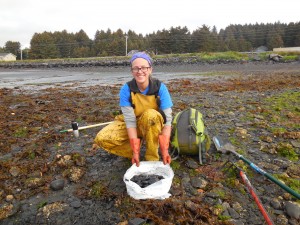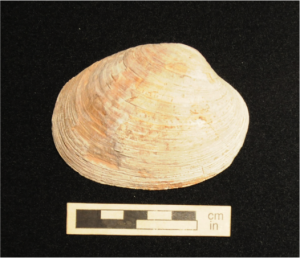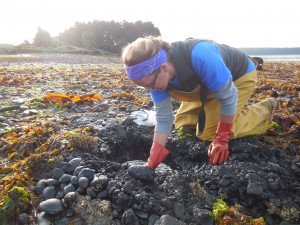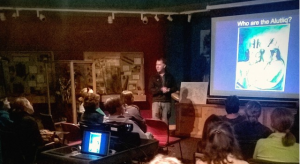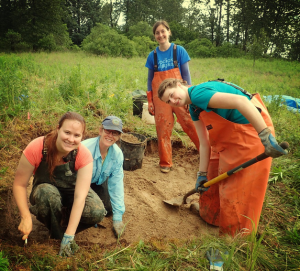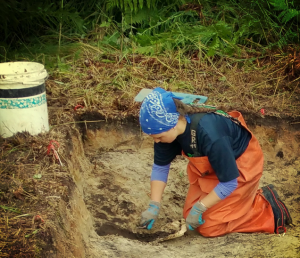Rachel Gill checking in for one final time, this time from the comfort of home. This post sums up the end of the dig and my reflections.
Profiles:
The last time we chatted, pits in Block B were on the mind. We finally reached the bottom of those pits in some areas, mostly along the north wall of Block B. It was getting down to the wire, the last few days of our excavation season, and we needed to see the profile.
Quick digression: a profile is the view of the wall and all the layers that we have dug out. Typically, we measure and draw these on the last day in order to get a picture of how all the layers in the stratigraphy come together and how they looked before we took it all out of the ground.
Profile example: the north wall of Block B – The Pit! Note the thick orange ash (Level 2) on the left, which dates to 3800 years ago. The black charcoal is the fill of the pit.
This profile allowed us to see the pit as it would have been if we hadn’t dug everything out. A thick black layer curved in the shape of a ‘U’ dominated the right of the north wall, and the orange ash of L2 was virtually absent in that portion of the wall, as if the previous residents had dug out the ash and tossed it somewhere else to make their smoke pit.
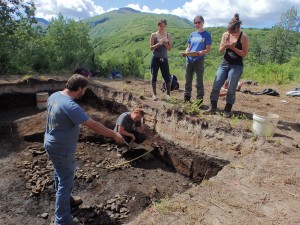 Students Ryan, Kate, Alexandria, Rachel, and Professor
Students Ryan, Kate, Alexandria, Rachel, and Professor
Catherine West, mapping and drawing the features and profile in Block B
While we uncovered the majority of the charcoal and rock pit fill, we did not have time to dig out the walls of the pit. The plan for next year is to remove the walls and the base of the pit to see what lies beneath.
What else was happening at the Kashevaroff Site?
To determine the extent of the site, the last week was not only filled with frantic digging in the two main excavations, but a few test pits scattered around the site. A test pit is just what it sounds like: a 1 meter by 1 meter hole in the ground used to see if 1) there was any kind of human activity and 2) how the stratigraphy compares to the rest of the site. We ultimately decided on three test pits, one far to the north past the main grid, another far to the south on a small knoll past Block B and the smoke pits, and one right in the middle of the two. For the sake of simplicity, we will call these 201, 301, and 401 respectively.

Students Sami Kassel and Hannah Wellman
after completing test pit 301
201 and 301 suggested the site stretches a long way. 201 looked similar to the 2X2 grid completed much earlier in the season next to Block A: very shallow with defined layers but nothing much underneath L3. 301 was much deeper, but the layers were less well defined. In fact, everything below the orange ash of L2 was muddled and confused, a heterogeneous mixture of sediments that weren’t identifiable as any specific layer. We expected to find glacial till at the bottom, but we found glacial outwash instead. This is basically slate sand that was deposited by glacial runoff.
401 looks like a HOUSE! This test pit is right between the two main grids, and was by far the most interesting. Below the L2 orange ash, we found what appeared to be the partial floor of a house. This indicates that not only were people smoking their food, but perhaps they were living nearby. Next season, we hope to open up the house entirely to see its features and perhaps date is specifically.
Sod quarrying might explain the discrepancies in the stratigraphy and depths to glacial material among the pits — in order to built their houses, smoke pits, other structures, and what have you, the residents were digging up sod from one part of the site and moving it to other parts. This would account for the very shallow dirt and complete absence of some layers in areas and the incredible depth in others. Hopefully we can test this hypothesis with further excavation.
Reflections
Over all, we did find some incredible artifacts and incredible potential for this site to hold answers to questions not yet discovered.
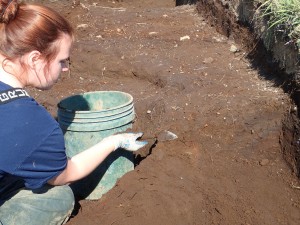 Student Rachel Gill mid-excavation
Student Rachel Gill mid-excavation
On a personal level, I just want to thank all of the amazing people that made this possible. I learned more than I thought possible about the Alutiiq people, their past and present, and myself as a student, a person, and a future archaeologist.

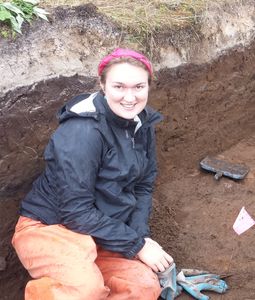

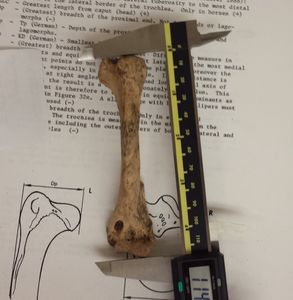

 Block B just after the sod and Katmai ash was removed
Block B just after the sod and Katmai ash was removed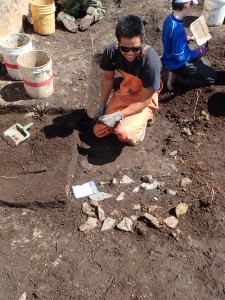 Alutiiq Museum intern Jesse kneeling next to
Alutiiq Museum intern Jesse kneeling next to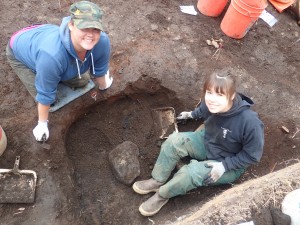 Students Alexandria and Jeannine excavate the
Students Alexandria and Jeannine excavate the Student Rachel crouches in the extended smoke pit - note the charcoal-rich L1Ag at her feet, and the 3800-year old ash fall (L2) that covered the pit.
Student Rachel crouches in the extended smoke pit - note the charcoal-rich L1Ag at her feet, and the 3800-year old ash fall (L2) that covered the pit.
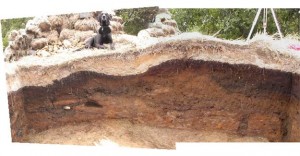 Example of the stratigraphy found at Salonie Creek, Kodiak Island - note the thick 1912 Katmai volcanic ash at the top, covering the archaeological layers below.
Example of the stratigraphy found at Salonie Creek, Kodiak Island - note the thick 1912 Katmai volcanic ash at the top, covering the archaeological layers below.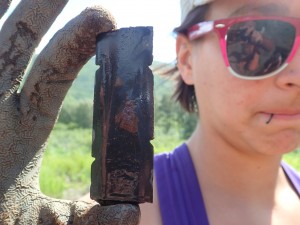 Bayonet shaft used for hunting sea mammals - this is made of ground slate, which is common in the area around the Kashevaroff site.
Bayonet shaft used for hunting sea mammals - this is made of ground slate, which is common in the area around the Kashevaroff site.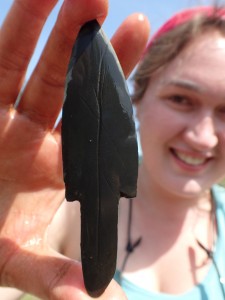 Ground slate point - the lines may be the hunter's identifying mark!
Ground slate point - the lines may be the hunter's identifying mark! Red chert stone tool from the Kachemak period - this is probably a small knife that would have been hafted into a bone handle.
Red chert stone tool from the Kachemak period - this is probably a small knife that would have been hafted into a bone handle.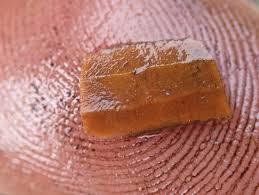 Example of a microblade from the Ocean Bay I period
Example of a microblade from the Ocean Bay I period